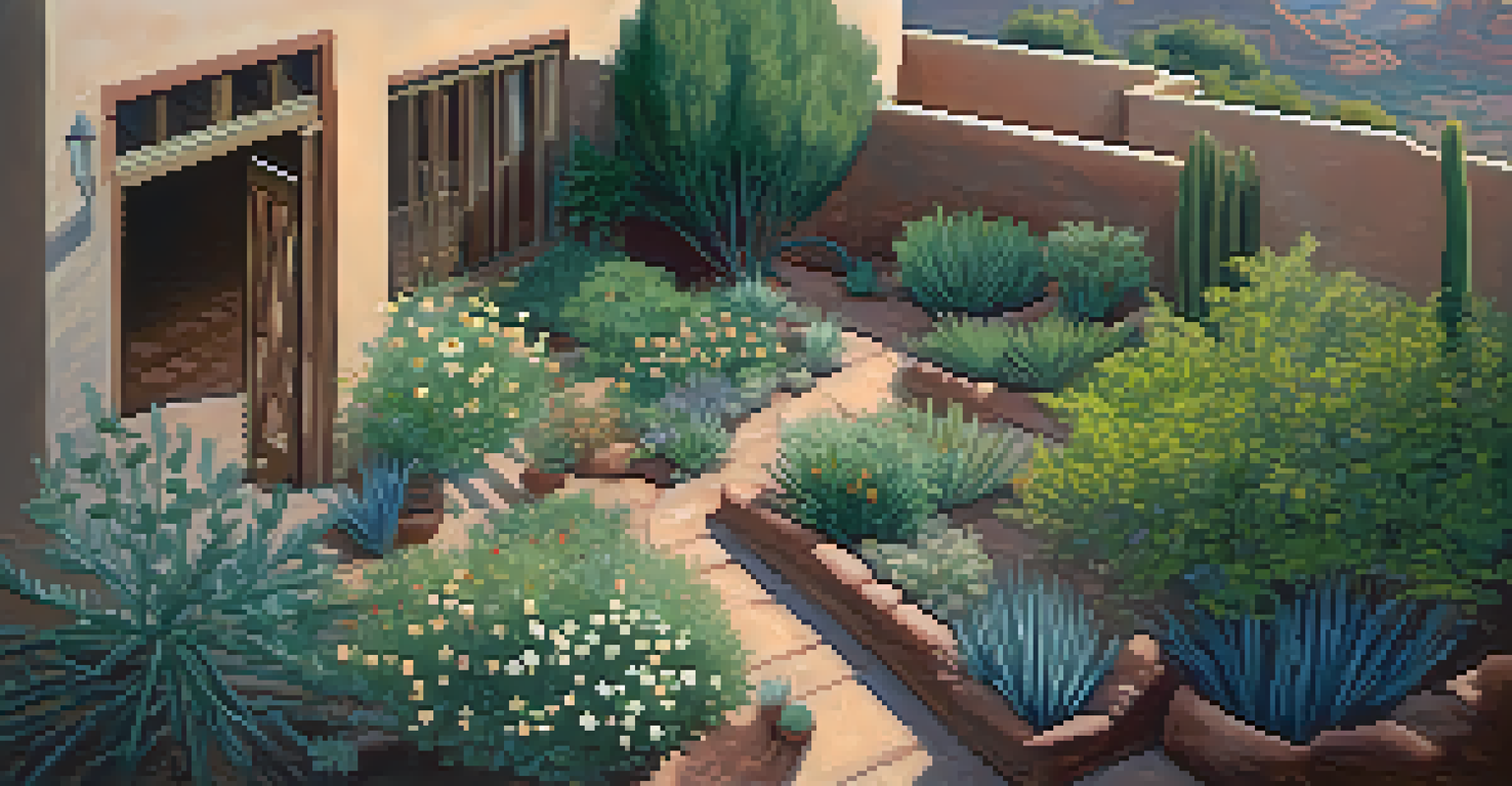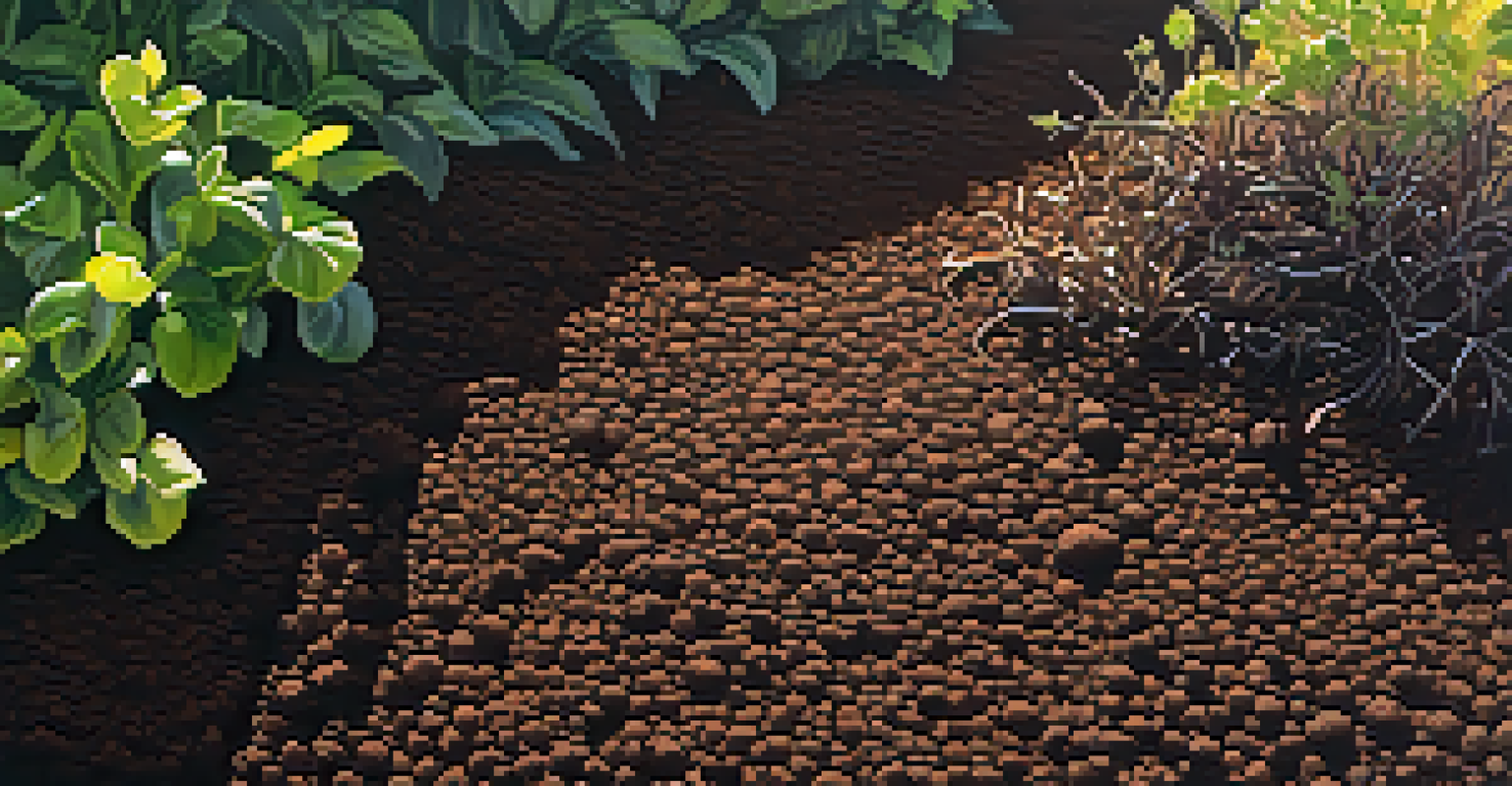Gardening in Sedona: Strategies for Dealing with Heat

Understanding Sedona's Unique Climate for Gardening
Sedona's climate presents unique challenges for gardeners, especially due to its high temperatures and arid conditions. The combination of intense sun and low humidity can quickly stress plants that aren’t adapted to such an environment. Understanding these elements is crucial as you plan your garden, ensuring you select the right plants and techniques to thrive in this stunning red rock landscape.
Gardening is not a science, it’s an act of faith. You have to believe that something good will come from the seeds you plant.
In addition to high temperatures, Sedona experiences significant temperature fluctuations between day and night. This can impact plant growth and watering needs, as cooler evenings may not provide enough moisture for plants that require consistent hydration throughout the day. Acknowledging these factors will help you create a more resilient garden.
To optimize your gardening efforts, take note of the specific microclimates in your yard. Areas shaded by trees or structures may have different temperature and moisture levels than open spaces, influencing your plant choices. By understanding and utilizing these microclimates, you can create a more diverse and thriving garden.
Selecting Heat-Resistant Plants for Your Garden
Choosing the right plants is one of the most effective strategies for gardening in Sedona's heat. Native and drought-tolerant plants tend to thrive in these conditions, requiring less water and care. Popular choices include succulents, lavender, and various types of cacti that not only survive but flourish under the Sedona sun.

In addition to native plants, consider incorporating heat-resistant varieties of traditional garden favorites. For example, certain types of tomatoes and peppers are bred to withstand higher temperatures, making them perfect for Sedona's climate. Researching and selecting these varieties can lead to a more fruitful harvest.
Adapt to Sedona's Climate
Understanding Sedona's high temperatures and arid conditions is essential for selecting the right plants and gardening techniques.
Additionally, grouping plants with similar water and sun needs can help you manage your garden more effectively. This approach reduces waste and maximizes the health of your plants. Creating a thoughtful planting strategy will set you up for success, even in challenging conditions.
Effective Watering Techniques in Hot Weather
Watering your garden efficiently is essential in the heat of Sedona. Early morning is the ideal time to water, as it allows plants to absorb moisture before the sun's intensity increases. This timing can prevent water loss through evaporation and ensures that your plants receive the hydration they need to thrive.
The love of gardening is a seed once sown that never dies.
Consider implementing drip irrigation systems or soaker hoses, which deliver water directly to the roots of your plants. These methods minimize water waste and target the areas that need it most, making them especially effective in arid climates. Not only do they conserve water, but they also reduce the risk of fungal diseases that can arise from overhead watering.
Mulching is another valuable technique to retain soil moisture. Applying a layer of organic mulch around your plants can help insulate the soil, keeping it cooler and reducing evaporation. This simple step can significantly improve your plants' resilience against the heat.
Creating Shade for Your Garden Plants
In Sedona's intense heat, creating shade for your plants can make a world of difference in their survival and growth. Utilizing shade cloths or garden structures can protect vulnerable plants from harsh sunlight. This not only reduces stress on the plants but can also prolong their blooming period and overall health.
Planting taller vegetation or using existing structures to cast shade is another effective strategy. For instance, positioning taller plants or trellises on the west side of your garden can shield more delicate plants from the afternoon sun. This natural shading technique can help maintain more stable temperatures in your garden.
Choose Heat-Resistant Plants
Opting for native and drought-tolerant plants can significantly enhance your garden's resilience in Sedona's challenging climate.
Additionally, consider using pots or containers that can be moved throughout the day. This flexibility allows you to adjust the location of your plants based on the sun's position, ensuring they receive optimal light without being scorched. With a little creativity, you can provide the perfect balance of sun and shade.
Soil Preparation for Heat Tolerance
The foundation of a thriving garden in Sedona begins with quality soil preparation. Amending your soil with organic matter, such as compost, enhances its structure and moisture-retention capabilities. Healthy soil not only supports strong root systems but also improves nutrient availability for your plants.
In addition to organic matter, consider incorporating mulch into your soil preparation. Mulch acts as a protective layer, helping to keep the soil cool and moist while also suppressing weeds that compete for resources. A well-mulched garden can significantly reduce the stress on your plants during hot spells.
Regular soil testing can also give you insights into its pH and nutrient levels, allowing you to make informed decisions about amendments. By ensuring your soil is well-balanced, you set the stage for robust plant growth, even in challenging conditions.
Utilizing Windbreaks for Plant Protection
Sedona's landscape can be windy, which adds another layer of challenge for gardeners. Implementing windbreaks can protect your plants from harsh winds that can cause physical damage or increase evaporation rates. This can be as simple as planting shrubs or installing fencing that creates a barrier against the wind.
Choosing plants that grow tall and dense can also serve as effective windbreaks. Evergreens or dense hedges can provide both protection and aesthetic appeal, creating a more sheltered microenvironment for your garden. This added layer of protection can help your plants thrive under stress.
Implement Smart Watering Methods
Efficient watering techniques, like early morning watering and using drip irrigation, are crucial for maintaining plant health in Sedona's heat.
Incorporating natural elements, such as rocks or landscape features, can also act as windbreaks. By strategically placing these elements, you can redirect wind flow and create calmer conditions for your more delicate plants. A thoughtful garden layout can enhance not just plant health but the overall beauty of your outdoor space.
Maintaining Your Garden Throughout the Growing Season
Ongoing maintenance is key to ensuring your garden remains healthy throughout Sedona's growing season. Regularly checking for pests and diseases can help you catch potential issues early, preventing them from spreading and compromising your plants. Staying vigilant allows you to address problems before they become overwhelming.
Additionally, adjusting your care routine as the season progresses is essential. As temperatures rise, you may need to modify your watering schedule, increase mulch layers, or provide additional shade. Being flexible and responsive to changing conditions will help your garden stay resilient.

Lastly, don’t forget to celebrate the successes in your garden! Each flower that blooms or vegetable that ripens is a testament to your hard work. Taking time to appreciate your garden can keep you motivated and connected to the natural beauty surrounding you in Sedona.